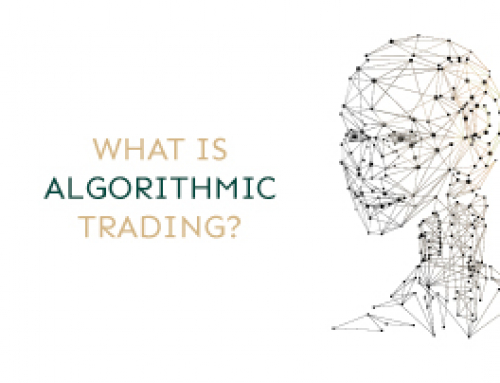Progress is an integral part of human history. And it always goes, even in those stages when it seems that the system has already reached perfection. At this moment, a fundamentally new mechanism or technology appears. This was the case with gasoline-powered cars (today they are won over by hybrids), as well as with fiat currencies.
The banking system is very “clumsy” and does not correspond to modern realities. It sometimes takes several days to transfer money from one country to another, but for business, it is extremely inconvenient. A Japanese group of programmers (codenamed Satoshi Nakamoto) tried to solve this problem in 2008 by introducing the first cryptocurrency – Bitcoin. Today, this is a great way for fast transactions, and each coin costs tens of thousands of dollars. However, today Bitcoin is the flagship of cryptocurrencies and the most expensive digital asset, but although it has some drawbacks.
Followers have tried to create new variants of cryptocurrencies that are devoid of these disadvantages. According to CoinMarketCap – Forbes, there are over 1,100 types of digital money in the world of cryptocurrencies today. And the total capitalization of this market is $133 billion. Therefore, it makes sense to talk about alternatives.
Altcoins – an alternative to Bitcoin
Most altcoins (alternative digital currencies) are just variations of Bitcoin. The creators of new currencies take the existing Bitcoin code and improve it as they see fit. It turns out the branching of cryptocurrencies, with a single “start” in the form of Bitcoin. This process is called a “hard fork”. A hard fork occurs when users of a currency cannot agree on how digital money works. The main problem with Bitcoin is that the cryptocurrency has become so popular that the system can no longer cope with the volume of work. As a result, Bitcoin users can wait several hours, or even days, for the operation to take place.
Bitcoin users decided it was time to improve the system. But the cryptocurrency does not have a single owner who could make new changes. A majority decision is not enough to change the decentralized cryptocurrency. 99 percent of users must agree with the new rules and begin to comply with them. And although the decision to change the bitcoin system was made, users could not come to a common plan of action. As a result, Bitcoin split into Bitcoin and Bitcoin Cash, and there was one more cryptocurrency on the market. In addition to Bitcoin Cash, there are 5 more popular types of digital money alternative to Bitcoin.
Ethereum – Smart Contracts
The creator of the cryptocurrency is the Canadian programmer Vitalik Buterin. A distinctive feature of the currency is that its quantity is unlimited, and an interesting principle of a smart contract is used.
According to this principle, the program withdraws the amount of currency from the accounts and holds it until the conditions of the contract (the conditions are determined by the users) are fulfilled. This approach reduces human intervention and makes the machine do the job. In the future, “smart contracts” can be applied in accounting, logistics, and jurisprudence.
The currency appeared in 2015, with funds collected by Buterin, through crowdfunding – a voluntary donation of money via the Internet. By the way, donations were collected in Bitcoins. If Bitcoin occupies 40-50 percent of the cryptocurrency market, then Ethereum – up to 20%, occupying an honorable second place in the list of popular cryptocurrencies.
Ethereum works in much the same way as Bitcoin, because the base code for “ether” is borrowed from the most popular digital asset. There are also miners here who “calculate” the cryptocurrency, blockchains that store information about transactions. Just like the Bitcoin system, Ethereum blockchains are stored on each user’s computer. Therefore, it is impossible to forge records – then it would be necessary to forge records on all computers.
At the same time, there are many differences between Bitcoin and ether. For example, there cannot be more than 21 million Bitcoins, while the amount of “ether” is unlimited. Blocks for storing information in the Ethereum system appear every 10-15 seconds, unlike Bitcoin, which takes 10 minutes for a new
block to appear.
Ripple is the fastest cryptocurrency
Most of the new cryptocurrencies appear due to small changes in the Bitcoin code. Like Ethereum, for example. But in the case of Ripple, the code was written from scratch, under the order of venture funds. Ripple was created to speed up and save money on banking. The calculator on the official website shows that if the bank’s turnover is $5 million, and the number of transactions is 300 thousand pieces per year, then you can save $3.4 on each transaction. Accordingly, the bank can save more than a million dollars a year.
Ripple’s technology is already being used by Bank of America and HSBC. Unlike Bitcoin and Ethereum, Ripple cannot be “mined”. It is a centralized system where all digital money already exists and belongs to one company – Ripple Lab. There are over 38 billion units of cryptocurrency at the moment.
If the systems of Bitcoin and “ether” require empty mathematical calculations to “slow down” the creation of new blocks, then the Ripple Lab gives out cryptocurrency for useful calculations – the processing of scientific data from different universities. Ripple holds 5.7 percent of the total cryptocurrency market, which is about $7 billion.
Litecoin – digital money for fast transactions
It occupies 2 percent of the total value of the cryptocurrency market, which is $2.7 billion. Litecoin appeared in 2011 thanks to former Google engineer Charles Lee. Litecoin is also a Bitcoin hard fork.
One of the differences between Litecoin is the speed of transaction processing – it is faster than in Bitcoin. If in Bitcoin blocks are created every 10 minutes, then in Litecoin it happens faster – every 2.5 minutes. This is why Litecoin can process more transactions than the Bitcoin system. The amount of cryptocurrency is limited, and cannot exceed 84 million units.
Dash – anonymous cryptocurrency
Dash ranks 6th on the list of cryptocurrencies. There are over 7.5 million units of this cryptocurrency in total. This is another cryptocurrency that appeared in 2014 as a result of a change in the Bitcoin code. The main difference from Bitcoin is complete anonymity.
Bitcoin is anonymous until the owner of the wallet is found. That is, all Bitcoin transactions are already visible, but what’s the point if the sender and recipient are unknown? If somehow the owner of the bitcoin wallet becomes known, then it will be possible to trace all the movements of his funds on the bitcoin account, even if he bought a cup of coffee 5 years ago.
In the Dash system, it is impossible to track other people’s transactions – transaction data are not published in blocks. Operators are responsible for this – another difference from Bitcoin. Operators, just like “miners”, process information on their computers and receive funds for it. On the forums dedicated to the extraction of cryptocurrency, it is said that operators earn twice as much as “miners”.
NEM – currency with a unique code
The NEM cryptocurrency appeared at the end of 2015. Unlike most cryptocurrencies, it has its unique code. But the most important difference is that Nem works using POI (proof of importance) algorithm technology.
What does it mean? For example, Litecoin and Dash work using a proof-of-work or POW algorithm. It’s as if you got a job as an artist, and you were paid exclusively for the painted pictures. Also, the system of bitcoin-like currencies rewards its users for correct calculations. However, this system already has drawbacks – as the tasks become more complex, the computing power must also increase. As a result, a lot of resources are wasted to find an answer to a systemic task that is almost useless.
The proof-of-stake or POS algorithm works on a dividend system – those who have more funds in their account receive interest. But in this case, rich users will only get rich faster. The POI algorithm used in Nem combines the concepts of these two algorithms. POI not only rewards those with higher account balances but also takes into account how often transactions are made with other users. Each user is given a trust rating. The higher it is, the more likely you are to receive a reward. The cryptocurrency occupies 1.5 percent of the total value of the cryptocurrency market, and this allows it to occupy an honorable place in the leaderboard.
Conclusion
As we can see, the variety of cryptocurrencies is great. Moreover, this segment is extremely volatile and allows you to make good profits through trading. But for professional trading, you need to have a huge knowledge base and understand the main market processes and all the nuances. Learning theory and practice through trial and error can take too much time and investment. Therefore, if you want to receive regular and stable profits, the best choice would be to turn to professionals.






Leave A Comment